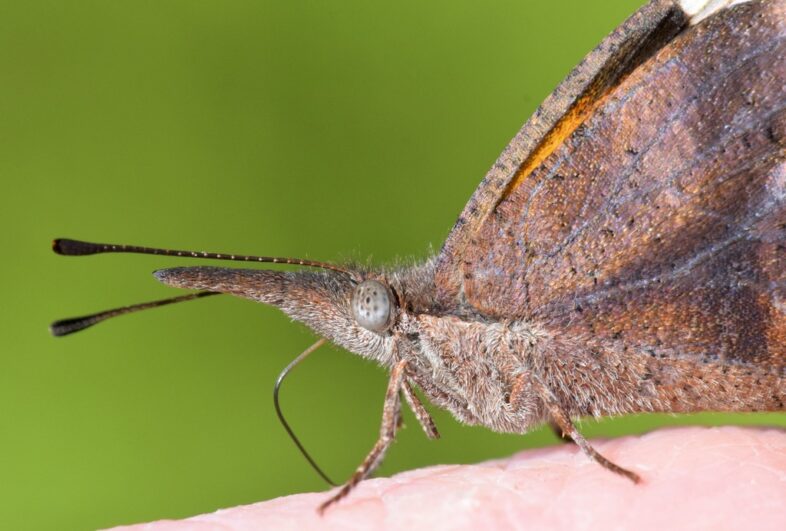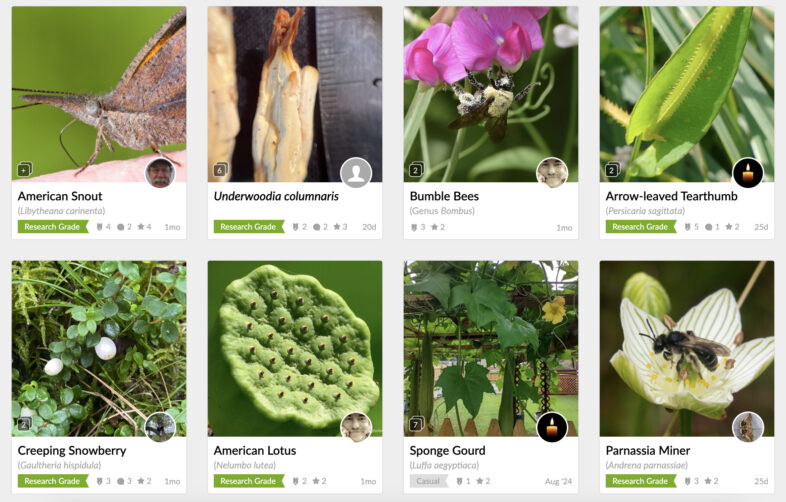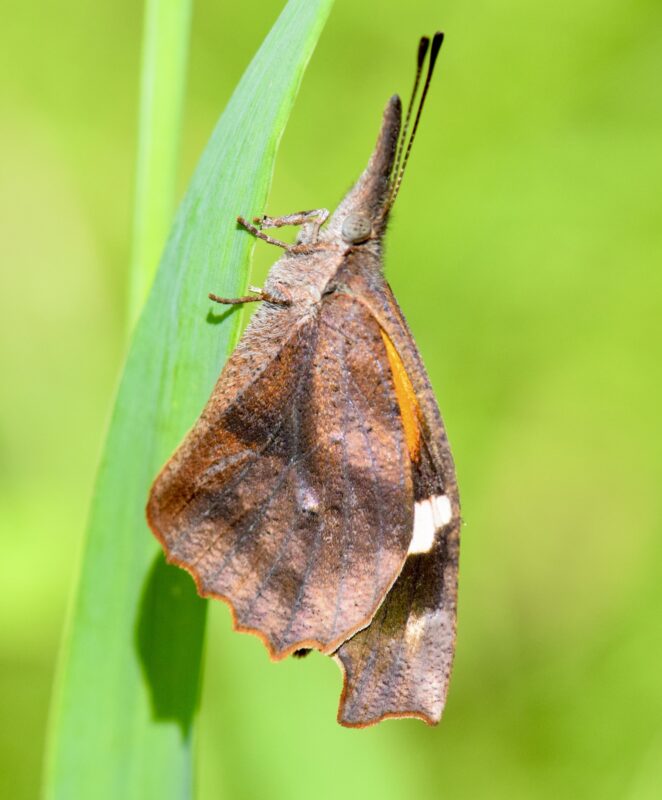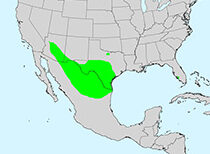Congratulations to Bernie Paquette for winning the August 2024 Photo-observation of the Month for the Vermont Atlas of Life on iNaturalist! His photo of an American Snout (Libytheana carinenta) butterfly he found at Mobbs Farm received the most faves of any iNaturalist observation in Vermont during the past month. Bernie reported that the butterfly enjoyed riding on his finger for more than 150 steps while he walked.

Its elongated mouth-parts resemble the stem of a dead leaf. They use this, combined with their wing shape and coloration, to be camouflaged from predators when hanging upside-down under a tree branch. But they are perhaps best known for their incredible irruptions and migrations that lead to sightings far north of their normal range.
The heart of their range coincides with their favored hostplant, Spiny Hackberry (Celtis ehrenbergiana). While drought reduces parasitoids that keep butterfly populations in check, summer rains cause Spiny Hackberry bushes to sprout new leaves. Female snouts prefer to lay eggs on the new leaves as young caterpillars can only develop on the tender leaves. With the right combination of drought and wet periods, Snouts can explode in abundance. They have been known to darken skies and cover roadways as they erupt in the millions.
The first known record of an American Snout in the state was during the first Vermont Butterfly Atlas in 2002. We have had nearly 30 records since, including 5 reports this year alone. Although they will use other species of hackberry, including American Hackberry (Celtis occidentalis) which is found in the Champlain and Connecticut valleys in Vermont, they have never been documented as reproducing here.

With 27,874 photo-observations submitted by 12,326 observers in August, it was very competitive. Click on the image above to see and explore all of the amazing observations.
Visit the Vermont Atlas of Life on iNaturalist where you can vote for the winner this month by clicking the ‘fave’ star on your favorite photo-observation. Make sure you get outdoors and record the biodiversity around you, then submit your discoveries and you could be a winner!


